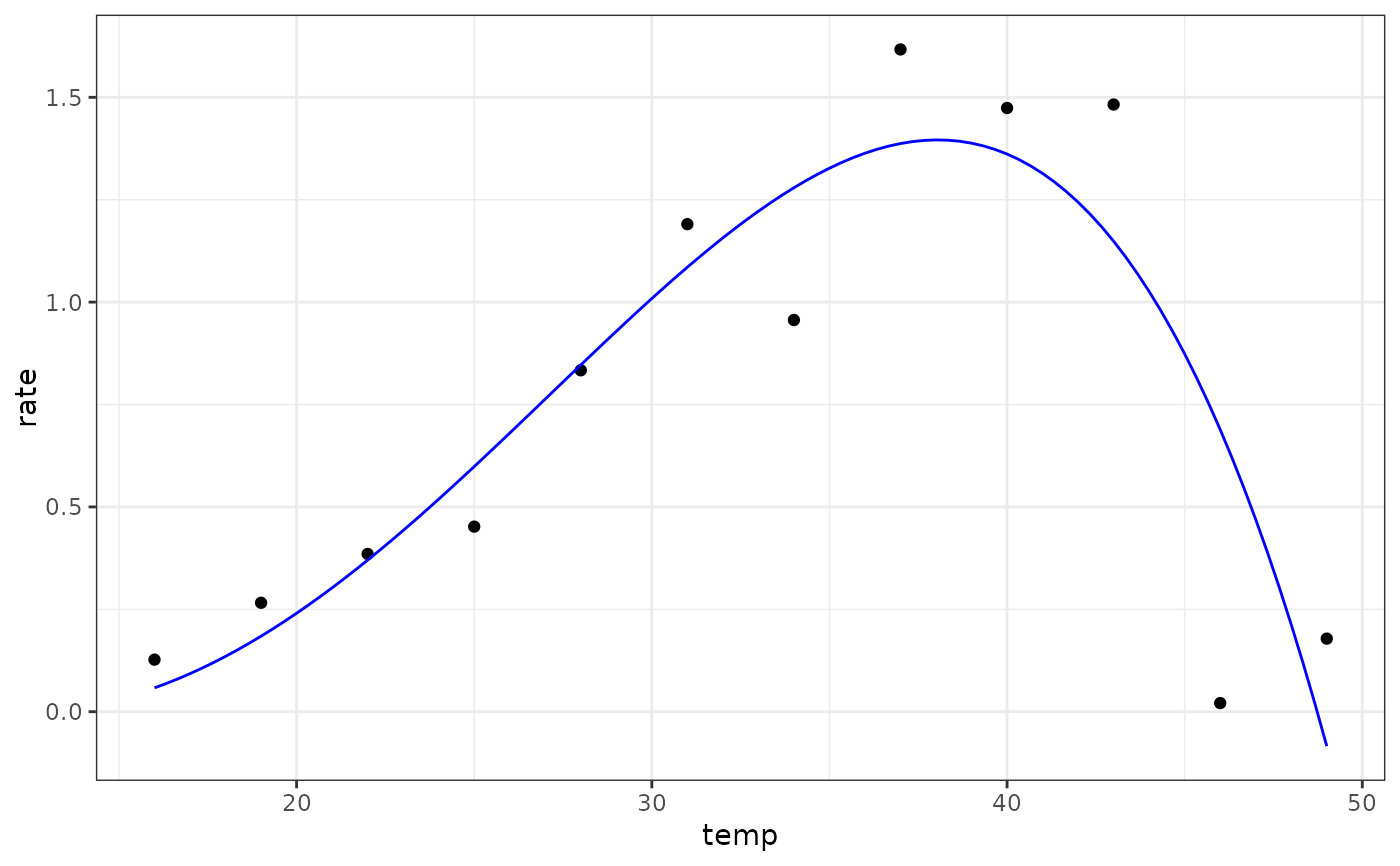
Taylor-Sexton model for fitting thermal performance curves
Source:R/taylorsexton_1972.R
taylorsexton_1972.RdTaylor-Sexton model for fitting thermal performance curves
Value
a numeric vector of rate values based on the temperatures and parameter values provided to the function
Details
Equation: $$rate = R_{\text{max}} \cdot \frac{-(T-T_{\text{min}})^4 + 2 \cdot (T - T_{\text{min}})^2 \cdot (T_{\text{opt}}-T_{\text{min}})^2}{(T_{\text{opt}}-T_{\text{min}})^4}$$
Start values in get_start_vals are derived from the data or sensible values from the literature.
Limits in get_lower_lims and get_upper_lims are based on extreme values that are unlikely to occur in ecological settings.
References
Taylor, S. E. & Sexton, O. J. Some implications of leaf tearing in Musaceae. Ecology 53, 143–149 (1972).
Examples
# load in ggplot
library(ggplot2)
# subset for the first TPC curve
data('chlorella_tpc')
d <- subset(chlorella_tpc, curve_id == 1)
# get start values and fit model
start_vals <- get_start_vals(d$temp, d$rate, model_name = 'taylorsexton_1972')
# fit model
mod <- nls.multstart::nls_multstart(rate~taylorsexton_1972(temp = temp, rmax, tmin, topt),
data = d,
iter = 200,
start_lower = start_vals - 10,
start_upper = start_vals + 10,
lower = get_lower_lims(d$temp, d$rate, model_name = 'taylorsexton_1972'),
upper = get_upper_lims(d$temp, d$rate, model_name = 'taylorsexton_1972'),
supp_errors = 'Y',
convergence_count = FALSE)
# look at model fit
summary(mod)
#>
#> Formula: rate ~ taylorsexton_1972(temp = temp, rmax, tmin, topt)
#>
#> Parameters:
#> Estimate Std. Error t value Pr(>|t|)
#> rmax 1.3960 0.1510 9.248 6.83e-06 ***
#> tmin 12.2556 3.0717 3.990 0.00316 **
#> topt 38.0473 0.9169 41.495 1.37e-11 ***
#> ---
#> Signif. codes: 0 ‘***’ 0.001 ‘**’ 0.01 ‘*’ 0.05 ‘.’ 0.1 ‘ ’ 1
#>
#> Residual standard error: 0.3055 on 9 degrees of freedom
#>
#> Number of iterations to convergence: 12
#> Achieved convergence tolerance: 1.49e-08
#>
# get predictions
preds <- data.frame(temp = seq(min(d$temp), max(d$temp), length.out = 100))
preds <- broom::augment(mod, newdata = preds)
# plot
ggplot(preds) +
geom_point(aes(temp, rate), d) +
geom_line(aes(temp, .fitted), col = 'blue') +
theme_bw()
